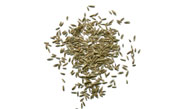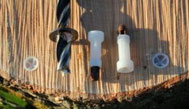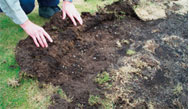
Welcome to our June issue of Aitkens Turf Update!
Below is information on our latest product news and how to follow us to receive all our latest information.
We also have an interesting atricle on seaweed which makes for some interesting reading which covers topics such as:-
- Seaweed and Nematodes
- Merits of extraction processes
- Seaweed concentrations
- Disease control and biostimulation
- Evaluating seaweed products
- Seaweeds and the future
You can find out all our latest information by following us on:-


Latest News
Grass Seed Supplier For Top Events With the UEFA Euro 2012 just around the corner, closely followed by the Olympics, its going to be a great summer of sport for natural turf. |  |
Ecoplug Max Stump Treatment A tree stump technique releasing glyphosate for the treatment of stumps to minimise root and stump sprouting. |  |
Chafer Grubs Has your Green become Rough? There are a host of turf diseases that can wreak havoc with playing surfaces..... |  |
New Horizons for Seaweed Extracts in Sportsturf Maintenance
Dr Henry Lyons, B.Sc,Ph.D, C.Chem.FICI,FRSC
A common factor in many of my meetings and discussions with turf professionals over the years is the confusion that surrounds the science behind seaweeds - much of this confusion is generated by commercial claims that are given poetic licence by marketing and sales personnel. Hereunder are some of the more common themes for debate that have been put to me during the course of my career.
Q. All seaweeds are the same?
A. No, not at all. There are as many seaplants as land plants and the variety and diversity is just as complex. The Algabase seaweed database lists over 123,000 different seaweeds. They are classified into families much the same as plants and animals. The three main classifications are by colour - red, green and brown.
Within these classifications there can be major differences, e.g. brown seaweeds that are constantly immersed in water (sub-tidal) and those that are under water part of the time and exposed to the elements on the shoreline for the rest of the time (inter-tidal).
Ascophyllum nodosum
Q. Seaweed is a nuisance with minimal commercial value?
A. Quite the opposite in fact. The seaweed industry is estimated to be worth over £6 billion annually with more than 80% of this coming from the food industry. Common everyday products such as ice-cream, beer and toothpaste may contain seaweed derived ingredients.
Q. Seaweed is a muck and magic product with little scientific basis?
A. Research on the use of seaweeds in plant care has been ongoing for more than fifty years. Several universities became very well known for the volume and depth of research with significant centres being Trondheim in Norway, Portsmouth in the UK, Clemson and Virginia in the USA.
Several industry led projects on bioactives from seaweed are currently underway in Ireland, UK and EU with funding coming from both national and international research agencies. It is expected to fill in the gaps in existing knowledge and produce sound scientific data in three years' time on which future applications can be based. Seaweed is a complex natural storehouse of biomolecules and unlike synthetic chemicals the activity is frequently due to a combination of effects and this makes it particularly difficult to identify and explain.
Q. Why is Ascophyllum nodosum promoted so strongly?
A. Ascophyllum nodosum is the species which has been used most extensively for the past sixty years and which has been the subject of several hundred research papers and reports based on trials carried out in universities and research institutes. This brown seaweed is only found in the temperate waters of the North Atlantic but the extracts have been widely used in all continents. In more recent years commercial extracts from some other brown seaweeds such as Ecklonia maxima and Macrocystis have come on the market and have been the subject of scientific trials and reports.
All seaweeds are continuously exposed to stress but intertidal species such as Ascophyllum have to grow and survive in conditions fluctuating between immersion in temperate salt water and exposure to blistering sunshine or deep frost on bare rocks in dry surroundings for several hours each day. This is the driving force behind the production and accumulation of an arsenal of stress resistant substances which can also come to the assistance of terrestrial plants such as turf grass in stressful situations ranging from frost to intense solar radiation and from very wet to drought conditions as well other stresses such as those arising from high salt levels in the soil.
Q. Hot processes destroy the beneficial growth hormones?
A. An intriguing question and the on that results in the main from the claims and counter claims of commercial companies eager to differentiate their product and claim supremacy in the quest of sales.
There is a variety of ways of liquidising seaweeds ranging from cold, physical mechanical processes to
enzymatic and high temperature hydrolysis. It would be outside the scope of this brief general article to describe each method in detail - in fact there is much scope for variation within these processes e.g. pH, temperature, pressure etc.
It should be noted that all processing methods have some effects on the plant components ranging from high shear mechanical stress in milling and shredding to high temperature in hot processes. The effects are not always negative ones as there are several examples of heat conversion of inactive substances into active forms especially in the food industry.
Cold processes are basically cell disrupting techniques commonly used for land plants for the release of components of interest to be used in food and drinks. In the case of seaweed extracts it sometimes claimed that plant growth hormones are deactivated by high temperature extraction but I have never seen scientific evidence of this.
On the contrary an M.Sc project at the University of Limerick in 2006 showed no change in concentration levels of IAA, adenine, kinetin and Gibberellic acid on autoclaving in aqueous media for prolonged periods, under the same conditions used in industrial high high temperature extraction processes. So, even if these were the real active components, the use of elevated temperature would have little or no effect on their stability.
In general low temperature extraction is more energy efficient and eco-friendly but this may be outweighed by the lower solids content and suitability for spraying through fine nozzles of the extract obtained.
The ultimate test is the benefits observed when used and I have yet to hear of a process that yields a product that does not work.
Q. What are the relative merits of the various methods of obtaining Seaweed extracts?
A. There have been claims and counterclaims concerning the merits of these processes. Up to recent times it was difficult to refute the arguments of the low temperature supporters that their methods were superior as the mild conditions did not cause degradation of heat sensitive biologically active molecules although I have never seen any scientific research reports to back up this claim. Now that oligosaccharides, humic acids and amino acids are gaining favour as the real active ingredients in biostimulant cocktails the pendulum has swung back in favour of liquids obtained by high temperature processes. Take Ascophyllum nodosum for example as it is the seaweed species most commonly used and also the most researched species. It contains approx 50% carbohydrate (mainly alginate, a long chain polysaccharide), 7% protein and 9% polyphenols as well as minerals and small amounts of other organic molecules. Mild alkaline hydrolysis of this seaweed at high temperature converts the polyphenols to humic acids and the long chain carbohydrates are broken down to form short chain sugars i.e. oligosaccharides. These biostimulants are then present at high levels (per cent) in comparison to the traditional plant growth hormones which ,if they survive, would be measured in ppm (parts per million) or ppb (parts per billion). It is thought that these oligosaccharides act as 'elicitors' i.e. they elicit the plant to produce its own natural plant hormones.
In spite of what salesmen and brochures may claim it is a fact that irrespective of the process used you will see a "seaweed effect" particularly if the extract is derived from Ascophyllum nodosum, the most researched seaweed in the world.
Q. Are seaweed extracts of any use in nematodes control?
A. Yes, nematode infestation is a problem in some golf courses. Trials have shown that liquid seaweed extracts have a beneficial effect against several types of nematodes including the root knot nematodes. The majority of the published research carried out to date used alkaline Ascophyllum nodosum extracts and there are no scientific reports of comparisons with other extracts in the literature.Seaweed extract on its own will rarely lead to acceptable levels of control for any nematode problem.
It should be borne in mind that liquid seaweed extracts are not nematicides, their effects are probably due to the stimulation of antagonists to the nematodes in the soil and maybe the physical blocking of the sensory apparatus of the nematodes. They will also have direct effects on the plant, stimulating the natural defence systems against nematode attack as well as stimulating early plant growth, especially root growth.
For optimum results against the nematodes the levels of Seaweed Extract required in the top 15 cm of soil would be rather high and uneconomical in most cases.(it would be much higher than the level recommended for biostimulation /growth benefits). In practice a balance should be struck, say 2-3 litres per hectare of Seaweed Extract each week. To summarise, they have a beneficial effect but are not regarded as nematicides.
Q. Do these extracts have a role in disease control in addition to biostimulation of plant growth?
A. Yes, in the past the ability to resist attack by pathogenic fungi and pests was attributed to the growth of strong root systems and healthy plants promoted by seaweed extracts .That is still true but the concepts of Induced Resistance for Plant Defence and Systemic Acquired Resistance (SAR) have been developed to explain how substances (natural and synthetic) can act as elicitors (inducers) which activate a plant's natural defence mechanism so that fungicides and pesticides are not required to deal with diseases and pests.
Liquid seaweed extracts are known to contain a multiplicity of bioactive substances so it is not surprising to find that some of these can be used for inducing resistance for plant defence purposes. The arsenal of defensive biomolecules which accumulate in these marine algae include a number of oligosaccharides which have been shown to be capable of activating the defence mechanisms of terrestrial plants.
Q. How can recommended application rates be compared for commercial extracts having different concentrations?
A. Figures given on labels and in sales literature cab very confusing and in some cases misleading. Concentration or strength of a seaweed extract is usually expressed as the number of total solids per 100 ml of the liquid i.e. %w/v. This can vary from 3 to 8% for cold extracts and up to 50% for 'hot' extracts where inactive long chain sugars are broken down to shorter chain oligosaccharides which are much more active and of course soluble.
This should be easy to follow but some manufacturers muddy the waters by focussing in one one component of the solid matter and then expressing it as a percentage of the total solids or dry matter (DM) content. For example a 5% w/v liquid extract having 7% laminarin on a DM basis actually contains just 0.35% w/v laminarin.
It is always challenging to recommend optimum application rates for natural products as the identity of the active ingredient(s) may not be known but the instructions given for many commercial seaweed extracts are based on actual field trials carried out over several years. However, seaweed extracts are not all the same so care is needed in making comparisons between recommended application rates for various brands and concentrations.
Q. How can I properly evaluate what a salesman is offering me?
A. Be careful and ask a few questions. Make sure you understand what is being offered to you. Arm yourself with the information required so you can purchase the best option to suit your actual needs. It helps to identify the following:
1. SEAWEED USED - insist on Ascophyllum nodosum
2. PROCESS USED - irrespective of whether it is a 'hot' or 'cold' process you will see a seaweed effect particularly if Ascophyllum nodosum is used. In academic circles oligosaccharides are gaining favour as being the real active ingredients. Hot extracts will naturally contain more of these actives as that application of heat is required to hydrolyse some of the long chain sugars (carbohydrates) present in Ascophyllum nodosum into these smaller more active units.
3. STRENGTH/ANALYSIS - don't be confused by how figures can be presented, ask for the analysis of the pack you are purchasing. Figures can be presented in all manner of ways so to overcome this, ask for the analysis to be based on what you are buying and ask for it in units per pack not percentages.
4. Ask for claims to be substantiated in writing, if the seller will not put their claims in writing this tells its own story.
Of course the ultimate decision making factor is repeat business - did it work before for you or for somebody you know and trust.
Q. What developments can be expected in the use of seaweeds in the future?
A. Applications have come a long way since the first links golf courses in Scotland used composted seaweed and sand to construct their greens and ,in some cases, fairways. The advent of liquid seaweed extracts in recent decades has opened up new horizons for golf course superintendents in both parkland and links courses all over the world. Up to now the emphasis has been on biostimulation and growth based on the use of 'whole' extracts which are of courses mixtures of several substances some of which are bioactive. Advances in separation and isolation of identified bioactives are likely to result in specific applications especially in the area of induced resistance for defence against attack by disease and pests. Each year synthetic chemical fungicides and pesticides are being removed from the marketplace and the search is on for more eco-friendly alternatives including products based on natural materials.
Seaweeds are ideal candidates for full scientific investigation for these purposes because of the collection of anti-stress biomolecules they build up for their own growth and survival as described earlier on. It will be interesting to see what new marine derived solutions will be developed for commercial and amenity horticulture in the years ahead.
In a career spanning over 40 years, Dr Lyons has been involved in the discovery, development, and commercialization of biotech products. Dr Lyons is both a founding member of Shannon Applied Biotechnology Centre and former Head of Development of Institute of Technology Tralee, Co. Kerry, Ireland.
Featured Products
You are on this mail list because you subscribed on our website. You may unsubscribe here
